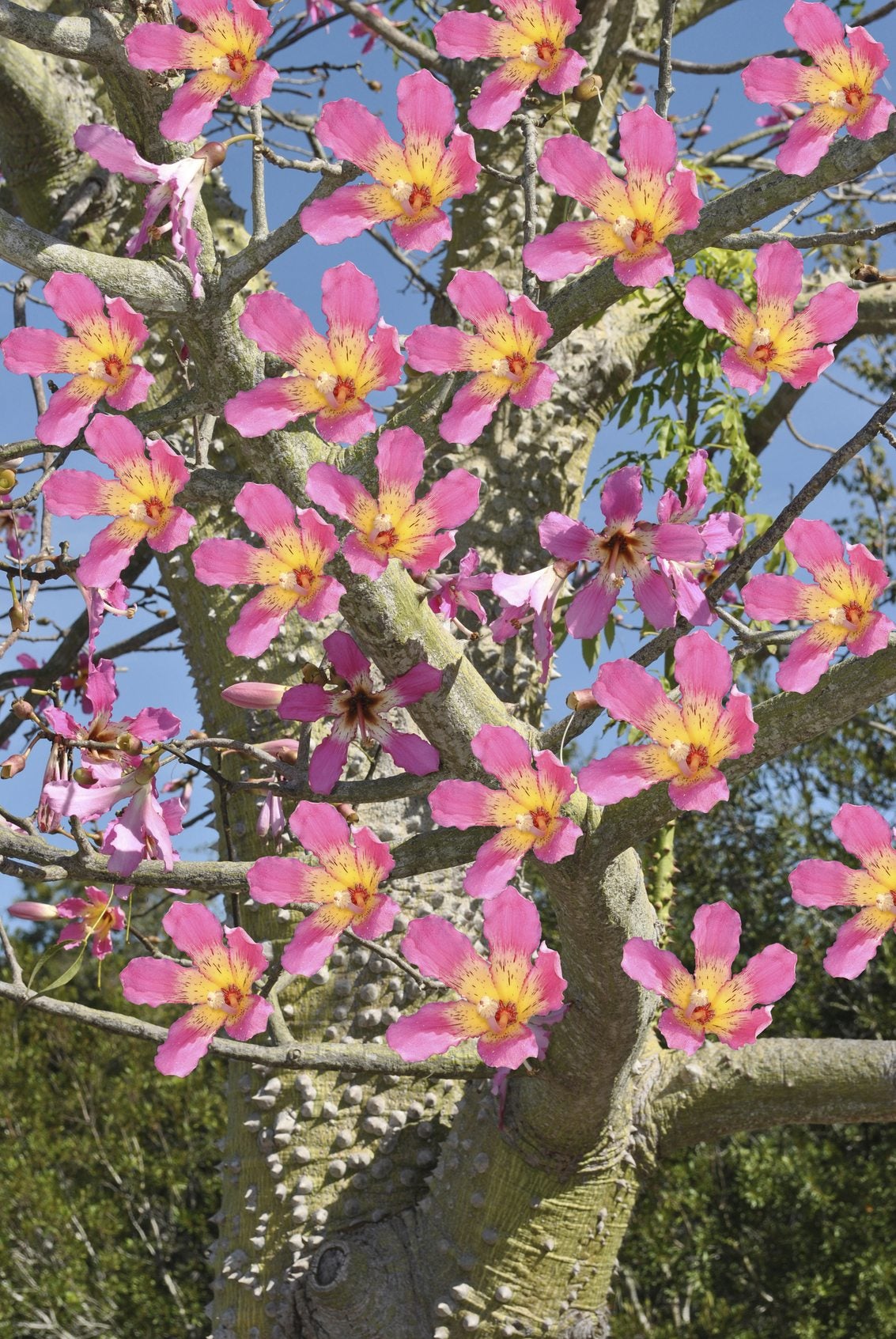Toborochi Tree Information: Where Does The Toborichi Tree Grow


Toborochi tree information is not well known by many gardeners. What is a toborochi tree? It’s a tall, deciduous tree with a thorny trunk, native to Argentina and Brazil. If you are interested in toborochi tree growing or want more toborochi tree information, read on.
Where Does the Toborochi Tree Grow?
The tree is native to countries in South America. It is not native to the United States. However, the toborochi tree is or could be cultivated in USDA plant hardiness zones 9b through 11. This includes the southern tips of Florida and Texas, as well as coastal and southern California. It’s not hard to identify a toborochi tree (Chorisia speciosa). Mature trees grow trunks shaped like bottles, making the trees look pregnant. Bolivian legends say a pregnant goddess hid inside the tree to give birth to the hummingbird god’s child. She comes out every year in the form of the tree’s pink flowers that do, in fact, attract hummingbirds.
Toborochi Tree Information
In its native range, the tender wood of the young toborochi tree is a preferred food of various predators. However, the serious thorns on the tree’s trunk protect it. The toborochi tree has many nicknames, including “arbol botella,” which means bottle tree. Some Spanish speakers also call the tree “palo borracho,” meaning drunken stick since the trees begin to look disheveled and distorted as they age. In English, it is sometimes called the silk floss tree. This is because the tree’s pods have flossy cotton inside sometimes used to stuff pillows or make rope.
Toborochi Tree Care
If you are thinking of toborochi tree growing, you’ll need to know its mature size. These trees grow to 55 feet (17 m.) tall and 50 feet (15 m.) wide. They grow fast and their silhouette is irregular. Be careful where you place a toborochi tree. Their strong roots can lift sidewalks. Keep them at least 15 feet (5 m.) from curbs, driveways, and sidewalks. These trees grow best in full sun but are not picky about the type of soil as long as it is well drained. The gorgeous display of pink or white flowers will light up your backyard when you’re toborochi tree growing. The large, showy blossoms appear in fall and winter when the tree has dropped its leaves. They resemble hibiscus with narrow petals.
Sign up for the Gardening Know How newsletter today and receive a free copy of our e-book "How to Grow Delicious Tomatoes".

Teo Spengler is a master gardener and a docent at the San Francisco Botanical Garden, where she hosts public tours. She has studied horticulture and written about nature, trees, plants, and gardening for more than two decades. Her extended family includes some 30 houseplants and hundreds of outdoor plants, including 250 trees, which are her main passion. Spengler currently splits her life between San Francisco and the French Basque Country, though she was raised in Alaska, giving her experience of gardening in a range of climates.